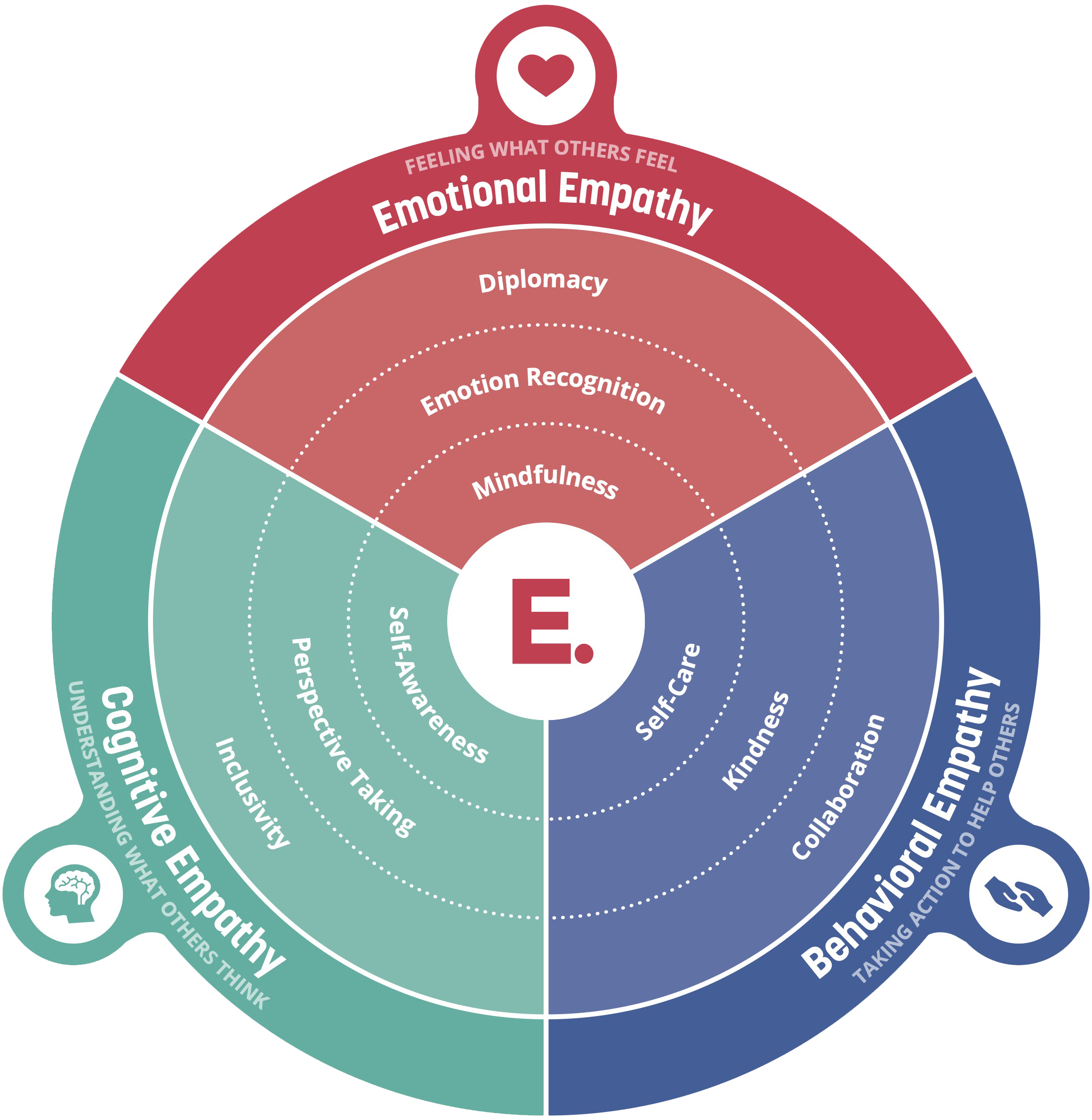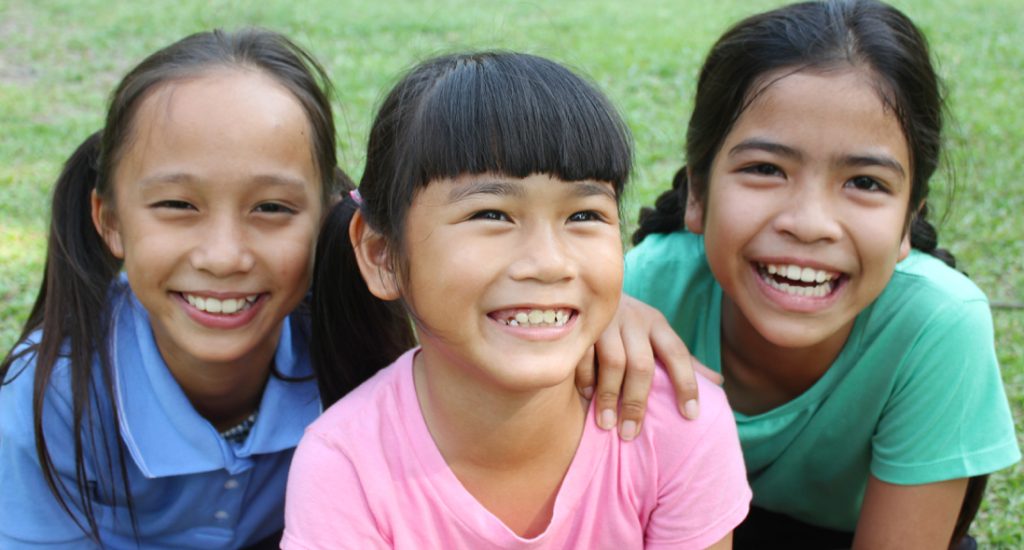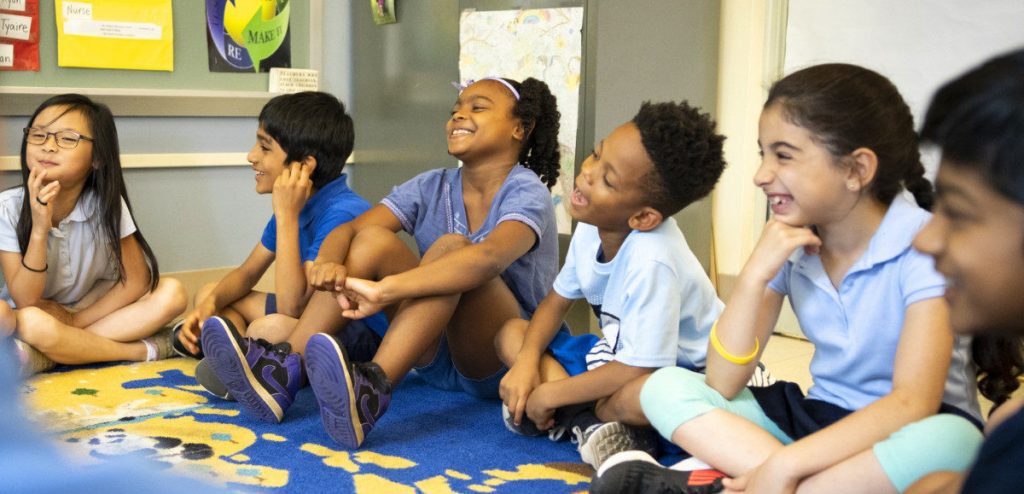The team at Empatico recently passed on questions they often hear from teachers, parents, and other people interested in the social emotional learning programming they’ve developed based on their Empathy Framework (which you can find below): “Is empathy nature or nurture? Is it an ability humans are just born with, or can it be learned?”

The simple answer to “Is empathy nature or nurture?” is “yes” (to both). Let us explain:
Nature supplies the marble
John: Like many other great apes, humans are a social species. We need to navigate—predict and explain—social interactions where we cooperate (and compete) in order to nurture and protect ourselves and our progeny. So, people are born with basic social-cognitive tools, such as the ability to take another person’s perspective, recognize their intentions, vicariously feel what others are feeling, etc. These social-cognitive tools make possible the various skills that appear in the intrapersonal and interpersonal rings of the Empathy Framework (e.g., perspective taking, self-care, etc.).
Unlike many other great apes, humans are also normative species. People operate in we-mode, where distinctions blur between what I do and what we do, what I think and what we think, what I feel and what we feel. So, people are born with the underlying motivations to share perceptions, thoughts, and feelings with one another. Humans show evidence of we-mode from infancy. Think about how prelinguistic children learn about the world. They draw their caregiver’s attention to a thing in the world, they check their caregiver’s emotional reaction to the thing, then judge whether they should explore further or avoid. This we-mode both depends on basic, inborn tools and motivations and helps to hone the tools and shape the motivations.
Melina: I agree with you, John. Researchers have found evidence that empathy has a strong biological basis. Specifically, they have found that when one person sees another experiencing pain, the pain-processing areas of the brain become active, regardless of whether the first person is also in pain. This activity in the brain also positively correlates with the first person’s self-reported feelings of empathy, leading scientists to believe that humans are, in fact, “hardwired” to empathize. Given how social we are as a species, empathy makes evolutionary sense for humans. After all, empathy is necessary for the formation of relationships, which are the basis of the formation of social groups, which themselves have contributed to humanity’s survival. Empathy then, is evolutionarily advantageous.
But as we’ve written about before in a blog post about empathy, behavior, and wellbeing, empathy does not just happen. It is a skill, and skills require practice. Empathy is something we cultivate and refine in an ongoing process, over time, through multiple social interactions. Is empathy nature or nurture? It’s something we acquire through nurture as well as nature.
Nurture prepares the sculptor
John: I agree! While the tools and motivations might be inborn, behavioral expressions are not necessarily automatic. People are agents, and agents can make choices on whether to suppress or amplify an inborn ability or motivation. For example, people are born with a predilection for sugar, but we choose when to eat sugary foods. At the very least, we have enough control not to eat sugar all the time. Also, people aren’t born with all the skills needed to use the tools nature provided. To use a tool skillfully (and on demand) requires learning.
As I talked about earlier, humans are a normative species. From our earliest moments, we learn social norms. Those norms very often determine how we use our in-born social and emotional tools. We learn norms about who deserves our empathy, and who does not. We learn how and when to express empathy. Oftentimes norm-learning just happens. Part of what “happens” is pattern recognition. We experience how people respond to our behaviors and we observe how people respond to the behavior of others. We notice patterns. Another part of what “happens” is mimicry. People automatically do what they observe others doing. People are especially diligent mimickers; the proverbial “monkey” doesn’t generally do what they see.
Melina: I’m glad you brought up mimicry, John. Mimicry is an important building block of empathy because of the way it functions in practice. That is, although it is a non-conscious phenomenon and occurs automatically, mimicry’s function is to demonstrate both understanding and a desire for connection or affiliation. Both of these are crucial to forming and maintaining social ties. It may also be a way of bridging the gap between self and other, which is necessary if empathy is to be enacted beyond the intrapersonal level, or level of the individual.
But even if mimicry contributes to our empathy skills, it’s not enough. To become and remain an empathetic person requires more than mimicry or repetition. It requires conscious, deliberate effort. And that’s where teaching empathy comes in.
John: You’re right: learning can also be more intentional and explicit. Parents, caregivers, and teachers (eventually friends, as well) explicitly teach children how to use their social and emotional skills as befits the social functioning of the household or classroom or playground. An organization like Empatico can provide a systematic approach to teaching empathy. The so-called “teachable moments” pervade every activity: whether it be a classroom discussion, or a game on the playground, or coding an online forum for posting funny memes. Each behavioral choice offers an opportunity to consider how others see the world and how they feel about it. A systematic teaching approach helps to establish a new normative practice of social and emotional expression: a habit of empathy.
Melina: Teaching also entails the same kind of work that is necessarily part of empathy: remaining curious, always questioning, and seeking to enhance one’s understanding of the world. These are all crucial practices that successful teachers must engage in, especially if they are teaching a social and emotional skill like empathy, which cannot be learned through rote memorization. Put another way, to teach empathy, the teacher must not only talk the talk but also walk the walk. Being an empathy role model, or allowing learners to see empathy exemplified and personified, is the most effective way to encourage uptake of it in their own lives. And perhaps the best way teachers can embody empathy is also the simplest: listening.
John: To get listening, people need to learn the limits of empathy (when they have misjudged the other). Much of everyday social cognition relies on perspective taking – making inferences about how others see the world and how they feel about it. Often, perspective taking suffers from two shortcuts: projection and stereotyping. Projection relies on personal experiences to infer the experiences of others. Stereotyping assumes that people who share one characteristic also share a common experience. (Note: both shortcuts exemplify the limits of “we-mode” and the blurring of individuals and their groups.)
Teachers who participated in Empathy Across the USA (an Empatico program to promote compassion across racial and socioeconomic differences) appear to have learned the perils of relying too much on perspective taking shortcuts when making judgments about how their students experience race and racism. By the end of the program, they showed evidence of considering the personal histories of their students. They may have stopped taking perspective and started seeking perspectives (“perspective seeking”), specifically, talking to students about their lives.
So, is empathy nature or nurture?
John: Getting back to the originating question for this blog post: Is empathy nature or nurture? Deciding when to take or seek perspective relies on experiential learning. It is the product of nurture, not nature.
Knology is a non-profit research organization dedicated to producing practical social science for a better world. Knology was founded in 2012, and our transdisciplinary team consists of over 20 social scientists, writers, and educators who draw on their varied areas of expertise to untangle complex social issues. Through our research, we seek to improve human relationships with the biosphere, to help cultural institutions become agents of social change, to help news organizations create more effective media, and to improve individual and collective wellbeing. We study these four topics by examining people’s behaviors and the broader systems that shape our actions.
John Voiklis, PhD, is a cognitive and social psychologist, and a principal researcher at Knology. Melina Sherman, PhD, is a communication scholar, and a researcher at Knology.



